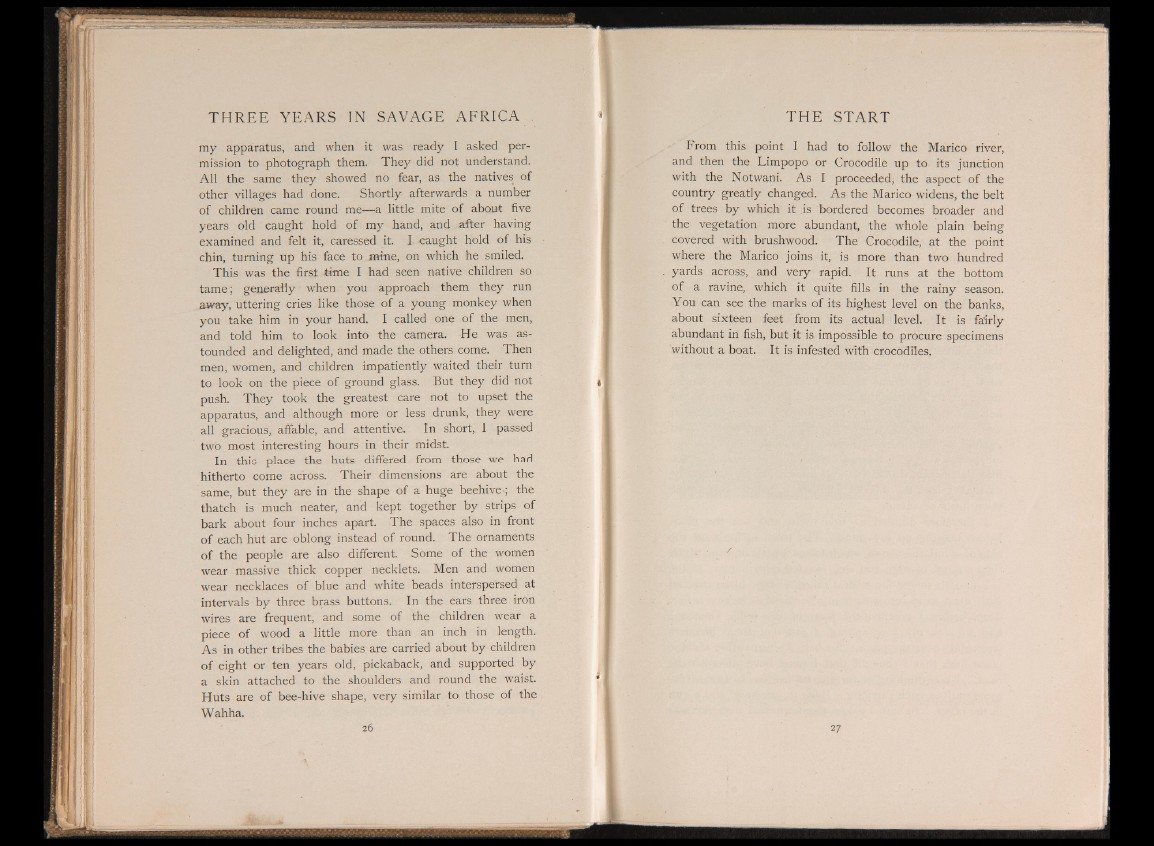
my apparatus, and when it was ready I asked permission
to photograph them. They did not understand.
All the same they showed no fear, as the natives of
other villages had done. Shortly afterwards a number
of children came round me—a little mite of about five
years old caught hold of my hand, and after having
examined and felt it, caressed it. I caught hold of his
chin, turning up his face to mine, on which he smiled.
This was the first time I had seen native children so
tame; generally when you approach them they run
away, uttering cries like those of a young monkey when
you take him in your hand. I called one of the men,
and told him to look into the camera. He was astounded
and delighted, and made the others come. Then
men, women, and children impatiently waited their turn
to look on the piece of ground glass. But they did not
push. They took the greatest care not to upset the
apparatus, and although more or less drunk, they were
all gracious, affable, and attentive. In short, I passed
two most interesting hours in their midst.
In this place the huts differed from those we had
hitherto come across. Their dimensions are about the
same, but they are in the shape of a huge beehive-; the
thatch is much neater, and kept together by strips of
bark about four inches apart. The spaces also in front
of each hut are oblong instead of round. The ornaments
of the people are also different. Some of the women
wear massive thick copper necklets. Men and women
wear necklaces of blue and white beads interspersed, at
intervals by three brass buttons. In the ears three iron
wires are frequent, and some of the children wear a
piece of wood a little more than an inch in length.
As in other tribes the babies are carried about by children
of eight or ten years old, pickaback, and supported by
a skin attached to the shoulders and round the waist.
Huts are of bee-hive shape, very similar to those of the
Wahha.
26
From this point I had to follow the Marico river,
and then the Limpopo or Crocodile up to its junction
with the Notwani. As I proceeded, the aspect of the
country greatly changed. As the Marico widens, the belt
of trees by which it is bordered becomes broader and
the vegetation more abundant, the whole plain being
covered with brushwood. The Crocodile, at the point
where the Marico joins it, is more than two hundred
yards across, and very rapid. It runs at the bottom
of a ravine, which it quite fills in the rainy season.
You can see the marks of its highest level on the banks,
about sixteen feet from its actual level. It is fairly
abundant in fish, but it is impossible to procure specimens
without a boat. It is infested with crocodiles.
27